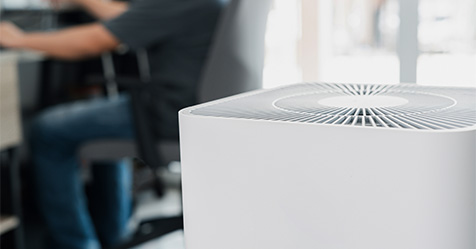This year’s ISSA/INTERCLEAN North America 2015 trade show, October 20–23, in Las Vegas, NV, will likely be a little different from those of previous years. As usual, there will be new tools and equipment on display, and more manufacturers will tout their green and environmentally preferable solutions and equipment.
However, the reason this show might be a bit different is because of a possible increase in manufacturers introducing systems that use no chemicals whatsoever for cleaning. Originally known as chemical-free cleaning systems, there is a more relevant name for this type of equipment today: engineered water cleaning systems.
Cleaning without chemicals is certainly not new to the professional cleaning industry. Vapor cleaning systems, which are likely the first example of engineered water/chemical-free cleaning equipment, have been around for decades.
What is Vapor Cleaning?
A vapor cleaner is a device that generates pressurized steam via an internal boiler. These systems heat water to approximately 250 degrees Fahrenheit or more, which is hot enough to destroy most germs, mold, mildew, bacteria, as well as other contaminants, leaving surfaces clean and healthy. Once cleaning is complete, the moisture evaporates, leaving no chemical residue on surfaces. This is important because chemical residue on surfaces acts like a magnet, attracting more soil and contaminants.
Electrolyzed water for cleaning floors is a more recent technology that has emerged in the professional cleaning industry. Describing how it works can be complicated, but in a nutshell, the electrically charged water is able to break down soils into smaller particulates, which are removed from the floor surface by the scrubber. After cleaning, the water returns to its original state, there is no residue, and it can be safely disposed.
While vapor cleaning systems can be effective in both commercial and residential settings, they certainly are not new. Further, electrolyzed water, which has been used in floor machines for nearly a decade, is also not a new technology. However, systems that use electrical power to mechanically convert water and oxygen into aqueous ozone are relatively new. And, just like vapor cleaners and electrolyzed water systems, once cleaning has been completed with these devices, the water evaporates and no residue is left behind.
Aqueous Ozone
While aqueous ozone technology is just starting to infiltrate the professional cleaning industry, it is certainly not new in other industries. We can get a better idea of what aqueous ozone is all about and how it works by understanding how the food industry uses it to help clean and sanitize food in addition to the tools and equipment used in food processing.
A big year for aqueous ozone cleaning was 2001, the year the U.S. Food and Drug Administration (FDA) approved this technology “for the safe use of ozone in gaseous and aqueous phases as an antimicrobial agent on food, including meat and poultry.” Today many of the largest food processing companies in the United States and around the world use ozone to fight Salmonella and Campylobacter in poultry and Listeria in many foods, such as seafood.
Ozone is naturally found in the atmosphere. It can also be engineered or created through the interaction of electricity and oxygen. It is then infused into water to create aqueous ozone and can then be dispensed through a wall-mounted station or from a portable rolling caddy.
The ozone becomes a strong oxidizing agent. In many respects the process creates a greener alternative to chlorine. In addition to being greener, aqueous ozone is much more potent than chlorine, making it a more effective cleaning agent and, when used in the food processing industry, smaller concentrations are needed compared to chlorine.
Aqueous ozone has become popular in the food processing industry—and the popularity is now spreading to the cleaning industry—because food processing companies historically struggle with bacteria and cross contamination issues. Aqueous ozone spray systems can help to lesson, if not eliminate, these issues when they are used to clean conveyors and other equipment in the food processing industry, similar to how they would be used in the professional cleaning industry. In fact, in food processing, because the ozone spray may run off into bacteria-ridden floor drains, it has been found that fewer bacteria build up in these areas.
The Key Benefits of Engineered Water
No-chemical cleaning systems can take green cleaning to a much higher level. Instead of reducing the impact of cleaning on workers, building users, and the environment, these systems essentially have no impact on the environment.
However, according to Stephen Ashkin, who is long considered the “father of green cleaning,” these systems have other benefits that are often overlooked. “As we take the next steps in the ‘greening’ of cleaning, these technologies are helping us [to] significantly reduce the environmental impacts associated with the manufacturing and disposing of literally tens of millions of plastic bottles, cardboard cartons, [as well as] paper and plastic shipping materials,” he says. “Further, they do not require us to extract more raw materials to be used for manufacturing cleaning solutions.”
In the long run and over time, Ashkin suggests, these benefits may prove to be some of the most significant contributions that engineered water, electrolyzed water, and aqueous ozone cleaning systems produce. “And, as these systems become more versatile, less expensive, and easier to use, we can expect more cleaning tasks [to be] performed effectively with the use of these types of devices.”


